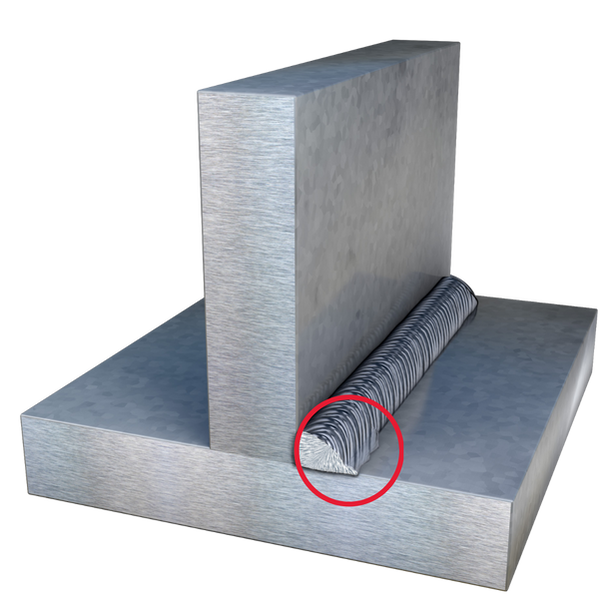Specialist Strategies for Preventing Weld Undercut Efficiently
Wiki Article
Mastering the Art of Welding: Just How to Stay Clear Of Undercut Welding Issues for Flawless Construction Results
By comprehending the root causes of undercut welding and implementing efficient strategies to avoid it, welders can raise their craft to new degrees of excellence. In the search of flawless construction outcomes, understanding the art of welding to avoid undercut issues is not simply an ability but a requirement for those aiming for perfection in their job.Comprehending Undercut Welding

To avoid undercut welding, welders need to make certain appropriate welding parameters, such as readjusting the current, voltage, traveling speed, and preserving the appropriate electrode angle. Furthermore, making use of the proper welding method for the specific joint setup is crucial. Employing weaving motions or backstepping strategies can assist make sure appropriate weld metal deposition and reduce the possibility of undercut development. Regular inspection of welds throughout and after the welding process is likewise vital to catch any undercut early and make required changes to protect against more problems. Preventing weld undercut. By understanding the sources of undercut welding and executing safety nets, welders can achieve top notch, structurally audio welds.
Reasons For Undercut in Welding
Understanding the variables that add to damage in welding is vital for welders to create top notch, structurally audio welds. Undercutting happens when the weld metal does not properly load the groove formed between the base steel and the formerly deposited weld metal. Numerous factors can result in undercut in welding. One typical reason is extreme heat input. Welding at heats for prolonged durations can result in the base steel thawing more than desired, resulting in undercut. Inadequate welding incorrect or existing welding rate can also add to damage. Insufficient current may not give sufficient warm to melt the base and filler steels sufficiently, while too much rate can prevent appropriate fusion, causing undercut. In addition, inappropriate electrode angles or wrong lantern manipulation strategies can create locations of low weld steel deposition, promoting undercut. Understanding these reasons and implementing correct welding strategies can assist protect against undercutting issues, making certain solid and long lasting welds.Methods to avoid Undercutting

To reduce the danger of damaging in welding, welders can utilize strategic welding strategies focused on boosting the top quality and honesty of the weld joints. One effective method is to readjust the welding specifications, such as voltage, present, and travel speed, to make certain appropriate heat input and deposition. Preserving a suitable electrode angle and making certain regular traveling speed can also assist protect against undercut. In addition, using the appropriate welding technique for the specific joint setup, such as weave or stringer grains, can contribute to decreasing undercutting. Preventing weld undercut.
Moreover, proper joint preparation, including ensuring clean base products without impurities and utilizing the appropriate welding consumables, is important in avoiding undercut problems. Using back-step welding strategies and managing the weld bead account can additionally aid disperse warm uniformly and minimize the threat of undercut. Routine evaluation of the weld joint throughout and after welding, in addition to executing quality assurance actions, can help in spotting and resolving damaging problems promptly. By carrying out these techniques carefully, welders can achieve remarkable construction results with minimal undercut flaws.
Relevance of Proper Welding Specifications
Selecting and preserving ideal welding specifications is necessary for attaining effective welds with minimal flaws. Welding criteria describe variables such as voltage, current, travel speed, electrode angle, and shielding gas circulation rate that directly impact the welding process. These specifications must be very carefully readjusted based upon the kind of product being bonded, its thickness, and the welding method utilized.Correct welding criteria make certain the correct amount of heat is related to melt the base metals and filler material uniformly. If the parameters are established too high, it can result in excessive heat input, causing spatter, burn-through, or distortion. On the various other hand, if the parameters are too reduced, insufficient blend, absence of penetration, or damaging may occur.
High Quality Assurance in Welding Workflow

Final Thought
Finally, understanding the art of welding needs an extensive understanding of undercut welding, its causes, and techniques to stop it. By guaranteeing appropriate welding parameters and implementing quality assurance techniques, perfect fabrication outcomes can be achieved. It is essential for welders to regularly strive for quality in their welding operations to stay clear of undercut problems and generate top notch welds.Undercut welding, an usual problem in read here welding procedures, happens when the weld steel doesn't properly fill up the groove and leaves a groove or anxiety along the welded joint.To stop undercut welding, welders should make sure proper welding specifications, such as adjusting the existing, voltage, travel rate, and maintaining the right electrode angle. Inadequate welding present or wrong welding rate can also add to damage.To reduce the danger of damaging in welding, welders can directory employ calculated welding techniques aimed at improving the top quality and integrity of the weld joints.In verdict, grasping the art of welding needs a comprehensive understanding of undercut welding, its reasons, and strategies to prevent it.
Report this wiki page